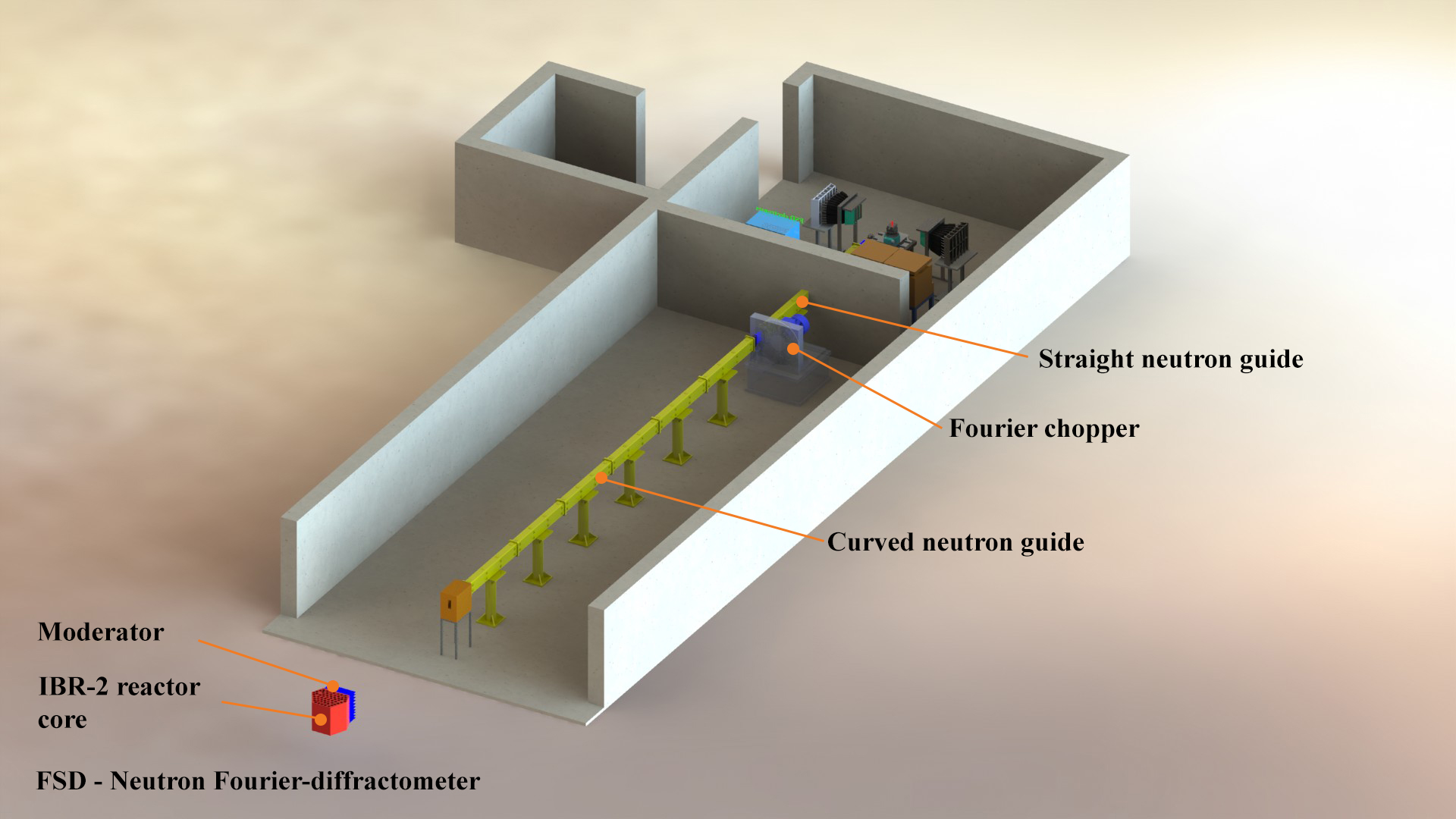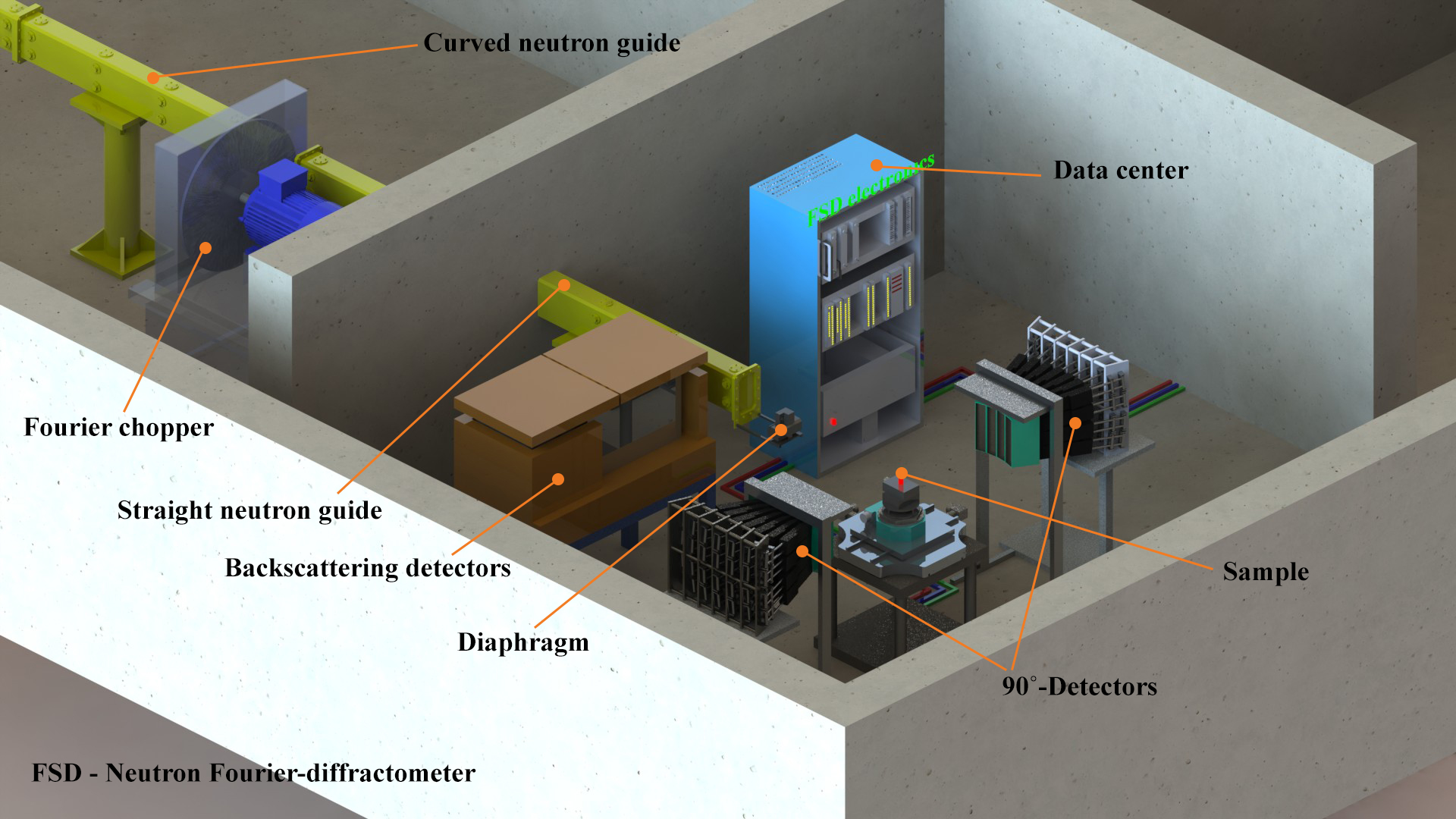Responsible for the facility
Papushkin Igor
tel. +7 (49621) 6-21-33
e-mail: This email address is being protected from spambots. You need JavaScript enabled to view it.
Main research areas
Investigations of internal mechanical stresses in materials are of both scientific and applied importance.
Scientific issues usually include the study of deformations and microdeformations in crystalline materials that occur during structural phase transitions, strains in multiphase systems, as well as the issue of determining the size of crystallites and dislocation density related to internal stresses.
Applied research is aimed at determining strains and stresses in industrial products with the subsequent development of technological recommendations that includes, for example, the experimental determination of residual stresses occurring after various technological operations (welding, rolling, annealing, quenching, etc.), strains occurring under the impact of cyclic loads (mechanical and thermal), radiation exposure (including effects of neutron irradiation on martensitic transformations), hydrogenation, etc.
A rapidly expanding range of tasks is also the study of new types of materials (composites, gradient materials, reinforced systems, cermets, shape memory alloys, etc.) in order to determine their suitability for use in various industrial products.
Facility layout
Main view of facility
Sample environment
Description of FSD
The study of residual stresses in various structural materials and bulk industrial products using neutron diffraction has become widespread in the world due to the non-destructive nature of the method and the high penetrating power of neutrons. Therefore, to carry out experiments in this area the neutron Fourier Stress diffractometer FSD has been developed and successfully operates on the beamline No. 11a of the IBR-2 pulsed reactor at the Frank Laboratory of Neutron Physics of JINR.
The IBR-2 reactor is a pulsed neutron source with a water comb moderator, in which fast neutrons produced in the reactor core are moderated to thermal energies. Thus, pulses of thermal neutrons are produced with a frequency of 5 Hz and duration of ~350 µs. To increase the luminosity of the diffractometer and to reduce the background level from fast neutrons and g-rays, the primary neutron beam on FSD is produced using an evacuated mirror neutron guide that consists of two sections - a curved and a straight one.
In the gap between neutron guides there are installed: a damper that provides prompt shutdown of the neutron beam and safe access to the main components of the facility, as well as a fast Fourier chopper that provides the required modulation of the neutron beam intensity. There are 1024 radial slots on the periphery of the chopper disk, similar slots are constructed on the stator plate. Such a Fourier chopper provides modulation of the neutron beam intensity with a frequency of about 100 kHz, while achieving a rather small efficient neutron pulse width (about 10 μs) that determines the high level of resolution of this diffractometer.
A diaphragm is installed at the exit from the straight section of the neutron guide that controls the size of the incident beam. The sample is positioned using a 4-axis HUBER goniometer with a load capacity of up to 300 kg. If required, the sample can be positioned in a high-temperature furnace or in a loading machine for uniaxial tension or compression. The detector system consists of 3 detectors: a backscattering detector and two detectors mounted at 90 degree angles to the incident beam. To isolate a small scattering volume of the order of several mm3 in the depth of the sample, in which the residual deformations are measured, radial collimators with a spatial resolution of 1.8 mm are installed in front of the 90-degree detectors. The automation system of the diffractometer allows to carry out local or remote control over the course of the experiment, as well as to flexibly form a measurement program based on the specified scanning points in the sample.
A special correlation technique - a combination of a fast Fourier chopper for modulating the intensity of the primary neutron beam and the RTOF method for data accumulation – allows to measure high-resolution diffraction spectra on the FSD diffractometer that allows to register small (of the order of 10-3) relative changes in interplanar distances in a crystalline lattice and thus to determine the residual stresses in bulk industrial products and structural materials with an accuracy of about 20 MPa.
Main characteristics Curved neutron guide mirror, with Ni coating length 19 m curvature radius 2864.8 m Straight neutron guide mirror, with Ni coating length 5.01 m Neutron beam size at the sample position (variable) (0 ÷ 10) × (0 ÷ 75) mm Moderator–sample distance 28.14 m Chopper–sample distance 5.55 m Fourier chopper (disk): high-strength Al alloy outer diameter 540 mm single slit width 0.7 mm number of slits 1024 maximum speed of rotation 6000 rpm maximum frequency of neutron beam modulation 102.4 kHz Thermal neutron pulse width water moderator in the low-resolution mode (TOF) 340 µs in the high-resolution mode (RTOF) 9.8 µs Neutron flux at the sample position without Fourier chopper 1.8×106 neutrons/cm2 ·c-1 with Fourier chopper 3.7×105 neutrons/cm2 ·с-1 Wavelength range l 0.9 ÷ 8 Å Detectors 2θ = 140° (backscattering) 6Li, with geometrical TOF focusing 2θ = ± 90° ZnS(Ag), with combined electronic and geometrical focusing Detector resolution Δd/d (at d = 2 Å) 2θ = 140° 2.3 × 10−3 2θ = ± 90° 4.0 × 10−3 Range by dhkl 2θ = 140° 0.51 ÷ 5.39 Å 2θ = ± 90° 0.63 ÷ 6.71 Å
Sample environment
- 4-axis (x,y,z,rotation) "HUBER" goniometer for precise movement of the sample;
- two multi-slit radial collimators with a spatial resolution of 1.8 mm;
- testing machine LM-29 for in situ sample studies under external load (up to 29 kN) and elevated temperature (up to 800°C);
- mirror furnace "MF2000" (room temperature < T < 1000°C);
- automated diaphragm with variable aperture for the incident neutron beam.
Publications
- Gizo Bokuchava, Correlation RTOF diffractometry at long-pulse neutron source: I. Data acquisition in list-mode, Nuclear Instruments and Methods in Physics Research A, 2020, Vol. 964, 163770. https://doi.org/10.1016/j.nima.2020.163770
- Gizo Bokuchava, Correlation RTOF diffractometry at long-pulse neutron source: II. Analysis of frequency windows and diffraction peak profiles, Nuclear Instruments and Methods in Physics Research A, 2020, Vol. 983, 164612. https://doi.org/10.1016/j.nima.2020.164612
- Gizo Bokuchava, Peter Petrov, Study of residual stresses and microstructural changes in Charpy test specimens reconstituted by various welding techniques, Metals, 2020, Vol. 10, Issue 5, 632. https://doi.org/10.3390/met10050632
- Gizo Bokuchava, Neutron Fourier Stress Diffractometer FSD at the IBR-2 pulsed reactor, Crystals, 2018, Vol. 8, 318. http://doi.org/10.3390/cryst8080318
- D. Bokuchava, Yu.E. Gorshkova, I.V. Papushkin, S. Guk, R. Kawalla, Investigation of plastically deformed TRIP composites by neutron diffraction and small angle neutron scattering methods, Journalof Surface Investigation. X-ray, Synchrotron and Neutron Techniques, 2018, Vol. 12, No. 2, pp. 227-232. http://doi.org/10.1134/S1027451018020052
Г.Д. Бокучава, Ю.Е. Горшкова, И.В. Папушкин, С.В. Гук, Р. Кавалла, Исследование пластически деформированных TRIP-композитов методами нейтронной дифракции и малоуглового рассеяния нейтронов, Поверхность. Рентгеновские, синхротронные и нейтронные исследования, 2018, № 3, с. 11-17. http://doi.org/10.7868/S0207352818030034 - Gancho Genchev, Nikolay Doynov, Ralf Ossenbrink, Vesselin Michailov, Gizo Bokuchava, Peter Petrov, “Residual stresses formation in multi-pass weldment: A numerical and experimental study”, Journal of Constructional Steel Research, 2017, V. 138, pp. 633–641. https://doi.org/10.1016/j.jcsr.2017.08.017
- D. Bokuchava, “Materials microstructure characterization using high resolution time-of-flight neutron diffraction”, Romanian Journal of Physics, 2016, Vol. 61, No. 5-6, pp. 903-925. http://www.nipne.ro/rjp/2016_61_5-6/0903_0925.pdf
- D. Bokuchava, I.V. Papushkin, V.I. Bobrovskii, N.V. Kataeva, “Evolution in the Dislocation Structure of Austenitic 16Cr–15Ni–3Mo–1Ti Steel Depending on the Degree of Cold Plastic Deformation”, Journal of Surface Investigation. X-ray, Synchrotronand Neutron Techniques, 2015, Vol. 9, Issue 1, pp. 44-52. http://doi.org/10.1134/S1027451015010048
Г.Д. Бокучава, И.В. Папушкин, В.И. Бобровский, Н.В. Катаева, “Эволюция дислокационной структуры аустенитной стали Х16Н15М3Т1 в зависимости от степени холодной пластической деформации”, Поверхность. Рентгеновские, синхротронные и нейтронные исследования, 2015, № 1, с. 49-57. http://doi.org/10.7868/S020735281501004 - G.D. Bokuchava, A.M. Balagurov, V.V. Sumin, I.V. Papushkin, “Neutron Fourier diffractometer FSD for residual stress studies in materials and industrial components”, Journal of Surface Investigation. X-ray, Synchrotron and Neutron Techniques, 2010, Vol. 4, Issue 6, pp. 879-890. http://doi.org/10.1134/S1027451010060029 Г.Д. Бокучава, А.М. Балагуров, В.В. Сумин, И.В. Папушкин, “Нейтронный фурье-дифрактометр ФСД для исследования остаточных напряжений в материалах и промышленных изделиях”, Поверхность. Рентгеновские, синхротронные и нейтронные исследования, 2010, № 11, с. 9-21. http://elibrary.ru/item.asp?id=15524438
- S. Kuzmin, A.M. Balagurov, G.D. Bokuchava, V.V. Zhuk, V.A. Kudryashev, “Detector for the FSD Fourier diffractometer based on ZnS (Ag) /6LiF scintillation screen and wavelength shifting fiber readout”, J. of Neutron Research, Vol. 10, Number 1 (2002) 31-41. http://doi.org/10.1080/10238160290027748
- D. Bokuchava, V.L. Aksenov, A.M. Balagurov, V.V. Zhuravlev, E.S. Kuzmin, A.P. Bulkin, V.A. Kudryashev, V.A. Trounov, “Neutron Fourier diffractometer FSD for internal stress analysis: first results”, Proc. of the Int. Conf. on Neutron Scattering (ICNS 2001), 9-13 September 2001, München, Germany. Applied Physics A: Materials Science & Processing, v.74 [Suppl1] (2002) pp s86-s88. http://doi.org/10.1007/s003390201750

